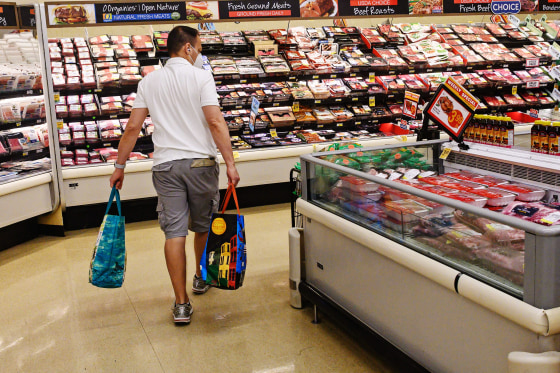Americans last month saw the biggest increase in their food bills in 40 years amid rising labor and energy costs, as well as global supply chain issues.
In May, the food price index increased 10.1 percent compared to the same time last year. That's the first increase of more than 10 percent since 1981, the U.S. Bureau of Labor Statistics reported Friday.
Prices for food at home increased 11.9 percent in May year-on-year. Within that category, chicken prices were up 17.4 percent, the largest increase ever recorded. Pork prices increased 13.3 percent; bacon, 15 percent; milk, 15.9 percent; coffee, 15.3 percent; and fruits and vegetables, 8.2 percent.
Food away from home, like at restaurants, was up 7.4 percent.

What's causing the increase? It's a combination of factors, experts say. Some of the largest costs for food come from workers' pay and fuel costs to deliver products. Right now, job postings for positions at food processing plants are at all-time highs, meaning there are more job openings than employers are able to fill. Businesses have offered higher wages as a result — costs that ultimately get passed on to consumers.
And as anyone who has an automobile fully understands, fuel prices are also at record highs. For firms that transport large quantities of food, those prices are even higher: The cost of diesel fuel has climbed even higher than regular gasoline amid shortages in refining capacity.
Global supply issues caused by the war in Ukraine — a key grains provider — as well as drought conditions in key farming areas like the Western U.S., are also exacerbating the situation, according to Christine LaFave Grace, executive editor at the industry publication Winsight Grocery Business.
"It's a perfect storm," she said.
When will these persistent high prices begin to subside? LaFave Grace said food industry analysts have shifted their expectations.
"More and more, we're hearing that there is not going to be a significant change until next spring," she said. "Six months ago, everyone was saying that we're going to get back down to 4 percent (inflation) by the end of the year. That's no longer the case."

